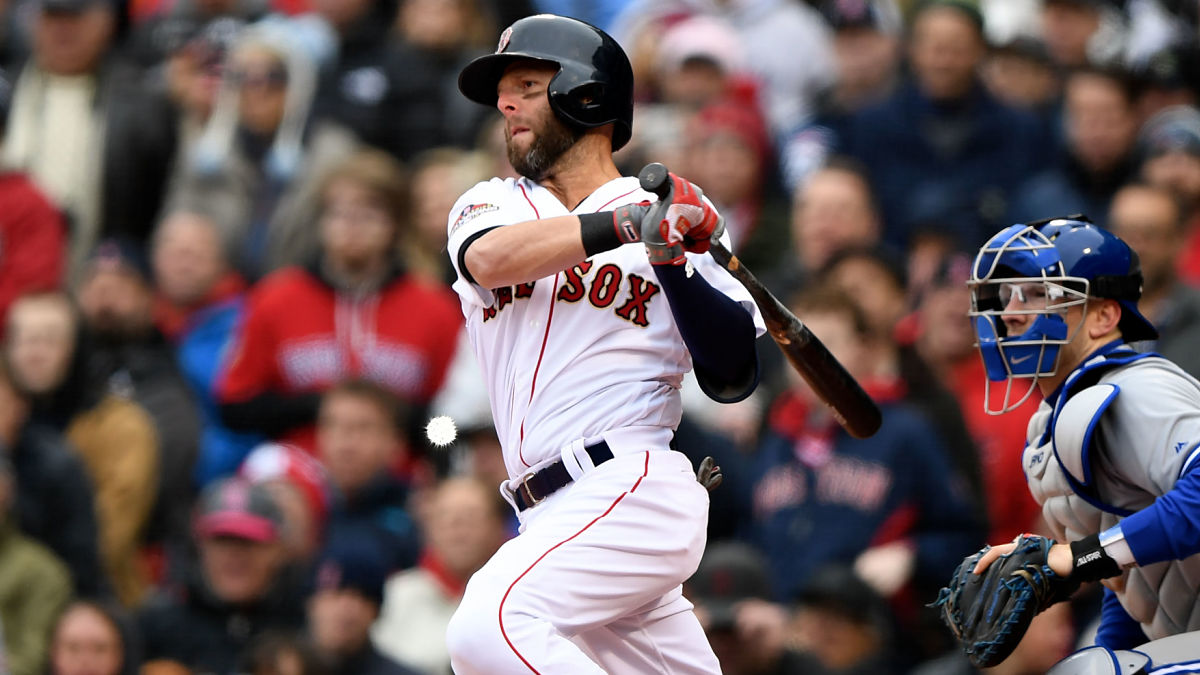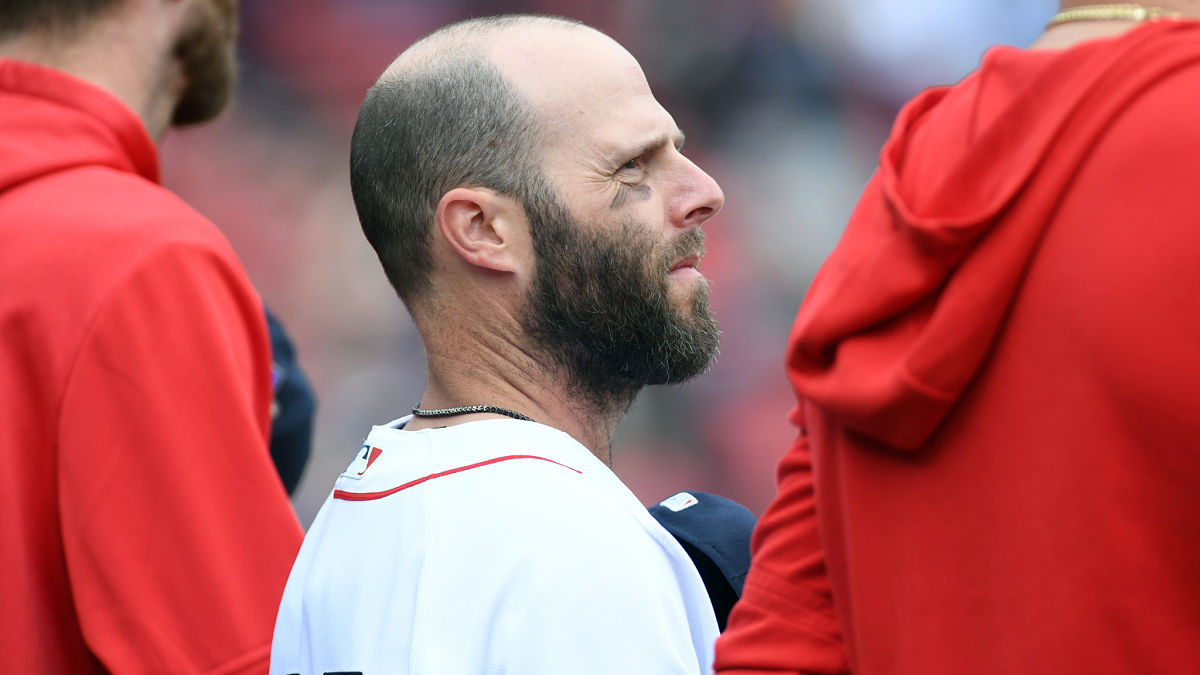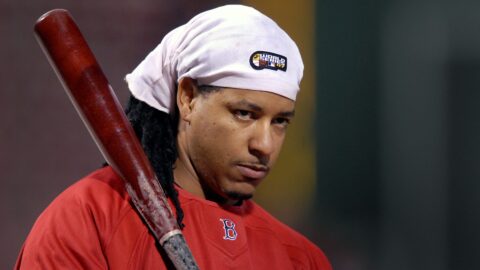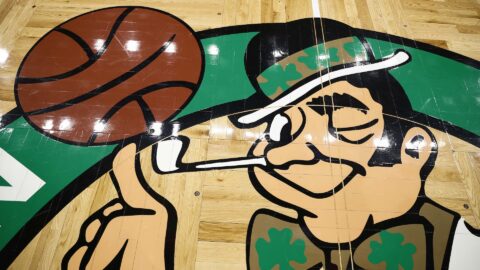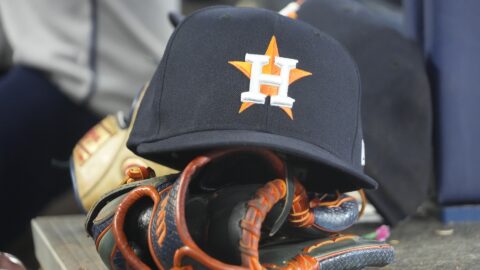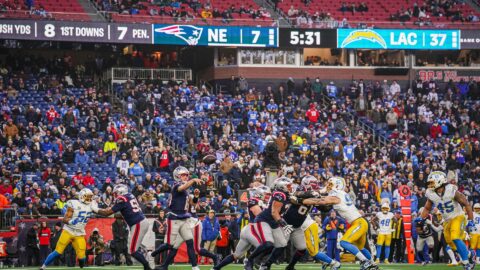Dustin Pedroia was no stranger to the underdog role before joining the Boston Red Sox.
At each level -- whether it was T-Ball, Little League, high school or college -- Pedroia faced skepticism thanks in large (pun intended) to his small stature.
Pedroia was generously listed at 5-foot-9, 175 pounds when announcing his retirement Monday. Reports suggest he was more along the lines of 5-foot-2, 140 pounds during his senior year at Woodland High School.
"He walked into my office in a cutoff white T-shirt, his skin was as white as the T-shirt, and he had the body of a sixth-grader," Pat Murphy, Pedroia’s coach at Arizona State University, told The Boston Globe’s Bob Hohler back in 2008, recalling the first time he met the soon-to-be Sun Devils star.
The first impression took a turn, wrote Hohler, when Pedroia flexed his biceps and asked Murphy, "Hey, coach, how do you like these guns?"
Now, nearly two decades later, that informal introduction serves as a microcosm for Pedroia’s baseball life: Undersized yet tough, brash, confident -- almost to a laughable extent. And it stands to reason, as we look back on Pedroia’s impressive career with the Red Sox, that he was exactly what Boston needed.
You see, for as much outside doubt as Pedroia dealt with before cracking the majors in 2006, it was nothing compared to the pressure he faced as a follow-up act to Boston’s “Idiots,” the most beloved team in Red Sox history.
Boston was just two years removed from breaking the “Curse of the Bambino” -- an 86-year championship drought that began in 1918, one year before the Red Sox sold Babe Ruth to the New York Yankees -- when Pedroia (a second-round pick in 2004) arrived in The Show. The ’04 triumph still resonated, no doubt, but an early exit in the 2005 postseason and several key departures in the 17 months after their historic duck boat parade left the Red Sox with a void.
Even though holdovers like David Ortiz, Manny Ramirez, Jason Varitek, Curt Schilling and Tim Wakefield still moved the needle, a large chunk of the Red Sox’s flamboyant identity was lost when Pedro Martinez, Derek Lowe, Johnny Damon and Kevin Millar, among others, signed elsewhere. The Red Sox needed an infusion of talent and personality, and Pedroia provided both in spades.
After a less-than-impressive 31-game debut in 2006, during which the Red Sox finished third in the American League East with an 86-76 record, Pedroia elevated his game in 2007, earning AL Rookie of the Year honors for the eventual World Series champions. The braggadocious second baseman had marked his territory, just as he had when showing off his “guns” inside Murphy’s office several years prior.
It was fair to wonder at that point whether Pedroia had peaked too early. Nice player, sure, but potential face of the franchise? This guy? The scrappy, little infielder from ASU?
Well, in what was a metaphorical double bird to his haters, Pedroia took another step in 2008, securing an All-Star selection, a Silver Slugger, a Gold Glove and the AL MVP Award. He was a full-blown superstar, a piece around which the Red Sox could build. And build, they did.
"Dustin always had a chip on his shoulder, like a fighter going into the ring who is trying to prove he belongs," Murphy told Hohler in 2008, a season in which Pedroia led the league in hits (213), runs (118) and doubles (54). "He was special from day one. I wish every coach had a chance to coach a Pedroia."
Despite a three-year playoff hiatus from 2010 to 2012, the Red Sox leaned heavily on Pedroia for above-average production, tone-setting energy and, above all, leadership. Boston even during its lowest points, turned to Pedroia for inspiration. (Hello, 2012.) His off-the-field confidence was surpassed only by his on-field tenacity. The Red Sox’s front office knew he was part of the solution; not the problem.
“It was clear he’s the type of player every Red Sox fan wants to see in the field and at the plate,” Red Sox principal owner John Henry said after Pedroia signed an eight-year, $110 million contract extension in July 2013. “He embodies everything we want to see from an ownership standpoint, from a GM (or) manager standpoint.
“You heard what (then-Red Sox manager) Tito Francona said about him,” Henry continued. “I think Tito used to say, ‘If I had nine Dustin’s, we’d win every game.’ He just embodies everything we want in a player coming out here every day.”
The Red Sox won another World Series title three months after Pedroia inked his new deal, although that October run in some ways marked the end of his vintage form. Pedroia had played the entire 2013 season with a thumb injury, and various ailments began to pile up in subsequent years, limiting both his availability and his potential between the lines.
Pedroia appeared in just three regular-season games during Boston’s 2018 championship campaign and nine during the Red Sox’s unsuccessful title defense in 2019. Still, his tutelage of teammates was undeniable, with former Red Sox skipper Alex Cora frequently lauding Pedroia's positive impact despite not being in the lineup. (Of course Pedroia taught Eduardo Rodriguez a new curveball grip. ¯\_(ツ)_/¯ )
It’s ironic, really, that Pedroia’s career is ending with a whimper at age 36. Silence never has been his thing. Nor has defeat. But the gritty underdog showed as much bite as he did bark for much of his 15-year career, earning him the respect and adoration of an entire fan base that needed another franchise pillar to gravitate toward -- in addition to Ortiz -- as the Red Sox ditched their old lovable loser persona in favor of building a dynasty.

